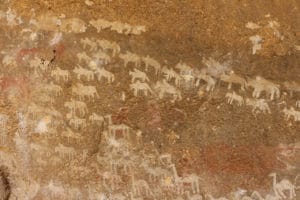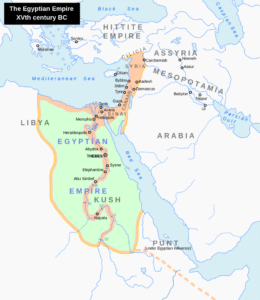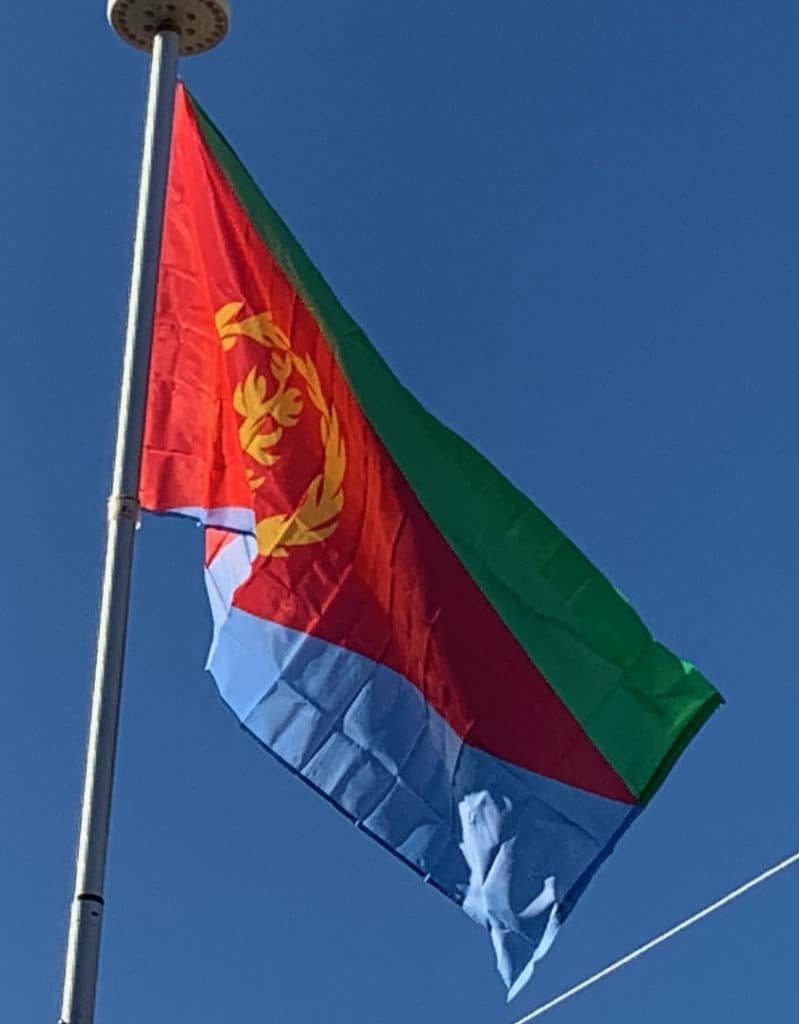The sovereign state of Eritrea is a member of the African Union, the United Nations, and the Intergovernmental Authority on Development, and is an observer state in the Arab League alongside Brazil, Venezuela and Turkey.
Etymology:
The name Eritrea is derived from the ancient Greek name for the Red Sea (Ἐρυθρὰ Θάλασσα Erythra Thalassa, based on the adjective ἐρυθρός erythros “red”). It was first formally adopted in 1890, with the formation of Italian Eritrea (Colonia Eritrea). The name persisted over the course of subsequent British and Ethiopian occupation, and was reaffirmed by the 1993 independence referendum and 1997 constitution.
History:
Prehistory:
Buya in Eritrea, one of the oldest hominids representing a possible link between Homo erectus and an archaic Homo sapiens was found by Italian scientists. Dated to over 1 million years old, it is the oldest skeletal find of its kind and provides a link between hominids and the earliest anatomically modern humans. It is believed that the section of the Danakil Depression in Eritrea was also a major player in terms of human evolution, and may contain other traces of evolution from Homo erectus hominids to anatomically modern humans.

During the last interglacial period, the Red Sea coast of Eritrea was occupied by early anatomically modern humans. It is believed that the area was on the route out of Africa that some scholars suggest was used by early humans to colonize the rest of the Old World. In 1999, the Eritrean Research Project Team composed of Eritrean, Canadian, American, Dutch and French scientists discovered a Paleolithic site with stone and obsidian tools dated to over 125,000 years old near the Bay of Zula south of Massawa, along the Red Sea littoral. The tools are believed to have been used by early humans to harvest marine resources such as clams and oysters.
According to linguists, the first Afroasiatic-speaking populations arrived in the region during the ensuing Neolithic era from the family’s proposed urheimat (“original homeland”) in the Nile Valley. Other scholars propose that the Afroasiatic family developed in situ in the Horn, with its speakers subsequently dispersing from there.
Antiquity:
Punt:
Together with Djibouti, Ethiopia, northern Somalia, and the Red Sea coast of Sudan, Eritrea is considered the most likely location of the land which the ancient Egyptians called Punt, first mentioned in the 25th century BC. The ancient Puntites had close relations with Ancient Egypt during the rule of Pharaoh Sahure and Queen Hatshepsut.

This is confirmed by genetic studies of mummified baboons. In 2010, a study was conducted on baboon mummies that were brought from Punt to Egypt as gifts by the ancient Egyptians. The scientists from the Egyptian Museum and the University of California used oxygen isotope analysis to examine hairs from two baboon mummies that had been preserved in the British Museum. One of the baboons had distorted isotopic data, so the other’s oxygen isotope values were compared to those of present-day baboon specimens from regions of interest. The researchers initially found that the mummies most closely matched modern baboon specimens in Eritrea and Ethiopia, which suggested that Punt was likely a narrow region that included eastern Ethiopia and all of Eritrea. In 2015, isotopic analysis of other ancient baboon mummies from Punt confirmed that the specimens likely originated from an area encompassing the Eritrea-Ethiopia corridor and eastern Somalia.
Ona Culture:
Excavations at Sembel found evidence of an ancient pre-Aksumite civilization in greater Asmara. This Ona urban culture is believed to have been among the earliest pastoral and agricultural communities in the Horn region. Artifacts at the site have been dated to between 800 BC and 400 BC, contemporaneous with other pre-Aksumite settlements in the Eritrean and Ethiopian highlands during the mid-first millennium BC.
